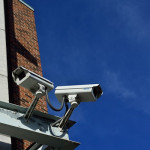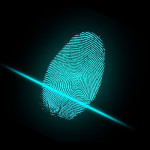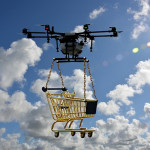The Importance Of Business Security Systems
Unfortunately, for many businesses, physical security is often overlooked. Some may have budget concerns while others may simply be too busy running their business. Sometimes it takes an actual incident for businesses to consider installing a security system.
Whatever the excuse, security should never be dismissed; it should be considered from the very beginning. As much as we would like to believe our chances of being targeted are slim, the truth is it happens more than we would like to admit. And thanks to advanced technology and increased demand, there are a variety of security solutions to suit different budgets and needs.
Here are some of the ways your business can benefit from a solid security system.
Deter Criminal Activity
This is obviously one of the most important reasons businesses look into security solutions. The presence of security cameras tends to discourage criminals for fear of being caught. In turn, they much prefer businesses which do not have proper surveillance systems in place.
In addition, security systems enable businesses to act quickly in notifying authorities when incidents do occur, helping to de-escalate the situation faster.
Protect Your Business Assets
Regardless of your company’s insurance policy, the loss of certain assets can still be devastating. For example, if your customers’ data is stolen, the repercussions could be extremely damaging and irreversible. Security systems come into play to secure assets which cannot be accounted for via insurance payouts.
Enhance Employee Safety
Employee safety is important, and security systems can help to protect and reassure your workers. For those who work late shifts, odd hours, or are often alone on the premises, security cameras can offer peace of mind. Should an accident or dangerous incident occur during this time, an advanced security system would be able to send out an alert and provide evidence as needed.
You will want to extend your security camera system to the employee parking lot as well, monitoring employees and they arrive and leave work, walking to and from their cars. Employees will also feel safer knowing their vehicles are under a watchful eye.
Save Money
While you may think the costs are too high, security solutions can save you money in the long run. First, many insurance companies offer discounted premiums to companies that utilize security systems to deter criminal activity. Some insurance companies even go as far as helping small businesses by defraying the costs. Also, surveillance footage helps to speed up the claims process.
The surveillance footage may even be used to defend your company in the case of frivolous lawsuits. For example, if a customer spends time on your property then falsely claims they were injured, without security cameras, it is their word against yours. Video surveillance could prove who is liable and potentially save you from expensive lawsuits.
Enjoy Greater Peace Of Mind
Aside from the benefits outlined above, there is an intangible feeling of peace knowing that your business is secure. Most advanced systems now offer remote access around the clock, allowing you to check in from wherever you may be.
The next, very important step is to choose the right security system for you. There are numerous security solutions that offer different features and functions, so you should take the time to evaluate your needs and research different systems. Feel free to browse our stock at SecurityCamExpert.com. We offer free quotes, site surveys, and provide installation and support services. If you need any help or have any questions, call us at 888-203-6294 and we will gladly assist you. You can also connect with us on Facebook, Google+, Twitter, LinkedIn, Pinterest, and Yelp!
Fingerprint Sensor Myths
As the Internet of Things continues to grow, more and more of our personal and business matters are being handled online. Thus, the internet is becoming a hotbed for cyber attacks, demonstrated by the various hacking stories in the news lately. Smartphones and PCs are often targeted since they usually contain a wealth of personal data. Thus fingerprint sensors are being implemented on these devices in order to properly identify and grant access to the legitimate owner.
But with new technology comes new concerns and critiques. Some people believe that fingerprint sensors are not as secure as they are being touted, while others believe the concept is simply not feasible. Here are some of the most common myths about this biometric technology.
Myth: It’s easy to spoof a fingerprint.
Despite its portrayal on the big screen, taking a high-resolution photo of a fingerprint or recovering a latent print would be extremely difficult. This method is known as an “attack spoof” and, because of its challenging nature, would not be a method that a criminal would likely use. With the exception of an extremely high-value target, it simply would not be worth the effort.
The main reason this myth persist is because this process can be easily demonstrated with a willing participant. You can create a spoof of your own fingerprint by creating a mold with various substances, including glue or clay. Fortunately, new anti-spoofing algorithms are constantly working to combat this.
Myth: Optical sensors are less secure than capacitive sensors because they store the actual fingerprint image.
Optical sensors do NOT store the complete fingerprint image. Instead, the biometric information is converted into a “template”. This template retains certain parameters while discarding the rest, and is then encrypted when the abstract data is stored. Since it is not a complete image, even if the fingerprint template is somehow retrieved, recreating a fingerprint from the template data is not possible. This applies to both optical and capacitive sensors.
Myth: If a bad guy gets the fingerprint image off of your phone or PC, he can use it to access your phone.
As previously mentioned, fingerprint images are not stored on your smartphone or PC, therefore, they cannot be stolen from your device.
Myth: Multi-factor biometric security on mobile devices is hard and/or expensive to do.
There is some truth to this. Mobile devices already have fingerprint sensors and front-facing cameras, so we can expect to see an increase in multi-factor authentication based on your fingerprint and face. Other combinations (e.g. iris and voice recognition) will likely follow.
Now comes the hard part. The algorithms that combine multiple biometric factors into a single trust score need to be thoroughly verified. While this is a complex process, expect to see it become available in the near future. When that happens, we will see a strong network in place that supports multi-factor authentication across various platforms and applications.
Myth: Contextual factors aren’t enough to secure a mobile device.
This statement should read that contextual factors “alone” are not enough to secure a mobile device. When combined with biometric authentication, contextual factors can be part of a smart and strong security solution. For example, smartwatches can stay unlocked until you take them off, offering convenience and security. Contextual factors, such as location, proximity, room monitoring, etc., will allow your device to remain unlocked as long as you are in your office, or to authorize transactions without additional authentication.
Myth: Fingerprint sensors have to be on the home button or back of the smartphone.
Fingerprint sensors are available in a broad range of form factors, including slim sensors that fit within the power button. New sensors also work under the cover glass and detect fingerprints so that the physical home button can be eliminated, thus enabling edge-to-edge infinity displays. We may eventually see solutions in which the entire display contains sensors, allowing an effective fingerprint scan from anywhere on the screen.
Myth: Biometric authentication is just for security.
This technology is not only used for security, but can also enhance the user experience. For example, if you are driving a car that uses a fingerprint scan on the start button, it may adjust preferences (e.g. seat, mirrors, infotainment) to match the user. In the case of a smart home, a fingerprint scan may unlock a door, trigger preferred lighting and music settings, and possibly restrict access to certain home features (for time-shares or rentals).
Myth: Optical sensors are too big/power-hungry for fingerprint scanning in a mobile device.
Thanks to technological advances, optical sensors are small and efficient enough to be used in mobile devices. Some optical sensors can generate more in-depth fingerprint images which allow for more details to be used in the fingerprint template.
Myth: All fingerprint solutions are equal, so cost should be the deciding factor.
Fingerprint-sensor providers offer a range of solutions utilizing different technologies (e.g. capacitive vs. optical) with varying security levels, form-factor options, power consumption, durability, and software. It is best to look at the specifications of both the hardware and software involved before making your decision, rather than basing your decision solely on cost.
Myth: Biometrics are too difficult/too expensive to manage for use in enterprise environments.
When it comes to enterprise environments, fingerprint solutions are actually more secure than username/password configurations. With fingerprint solutions, the need for password resets or IT support calls are eliminated. Because of this, maintenance and support for these systems is easier, which is crucial in today’s cloud-based business world. And updating PCs is simple via a peripheral USB dongle-based fingerprint sensor, or a mouse with embedded fingerprint sensor.
Myth: Encryption is enough to protect a fingerprint template file.
Encryption is used to protect the template file while it is being stored, generally in a small amount of non-volatile RAM (NVRAM). However, more protection is necessary for when the template must be decrypted, for example, during the testing for a match. These security architectures can include match-on-host solutions, secure element, and match-in-sensor solutions.
What are your thoughts on the future of fingerprint sensors and biometric technology? Connect with us on Facebook, Google+, Twitter, LinkedIn, and Pinterest.
Invest in your security and safety when you shop at SecurityCamExpert.com. Find CCTV surveillance cameras, DVRs, NVRs, and more to monitor and secure your home or business. Call 888-203-6294 to learn more!
Sun Safety
Now that summer is in full effect, you should be mindful of sun safety practices. Whether you’re enjoying a staycation, vacation, or simply some outdoor fun, be sure to protect your skin from the sun. Here are some helpful sun and skin safety tips to keep in mind.
Cover Up During Transit
The ultraviolet (UV) A rays from the sun may not always cause sunburn, however, exposure can lead to skin aging and skin cancer. If you are sitting in a car or the window seat of an airplane, you may still be exposed as these UVA rays can penetrate glass and plastic. Be sure to cover up and apply sunscreen as needed.
Be Careful Near Water
A 2009 study found that the number of moles children had increased by 5% for every vacation taken near the water. This is concerning because more moles means an increased risk of developing melanoma. While proper sunscreen application helps, it may not be enough. Schedule outdoor activities in the morning and late afternoon and utilize protective clothing and hats.
Don’t Forget About Reflected Rays
When the sun’s rays hit a reflective surface (ex. sand, snow, water), they bounce back up. This increases your exposure as the UV rays are now coming from above and below. The World Health Organization (WHO) reports that water reflects less than 10% of UV rays while sea-foam in a choppy ocean reflects 25%, sand reflects about 15%, and snow reflects almost 50%. Keep your destination in mind and pack the appropriate clothing and sunscreen.
Account For Altitude
Remember that as you get closer to the sun, the air gets thinner, thus there is less atmosphere to block UV radiation. To gauge this, for every 1,000 feet you gain in elevation, the sun’s rays increase in strength by 10-15 percent.
Count The Daylight Hours
Avoiding the sun between 10 am and 4 pm (when the rays are strongest) is typically advised. However, if you’re in a place where the sun doesn’t set until 10pm or later in the summer, it is still possible to get sunburned or damage your skin well past that time frame. If that’s the case, remember to reapply sunscreen while the sun is out.
Don’t Be Fooled By Cool Or Cloudy Conditions
Cloudy, overcast skies give people a false sense of security, often resulting in them believing that staying out in the sun longer will do no harm. While UV radiation may be less when it is cold or overcast, you are still getting some and can still do damage and even get burned. Despite the cold, cloudy weather, you should still apply sunscreen.
Buy Sunscreen At Your Destination
If you’re going on vacation and only taking a carry-on bag, it’s likely that a 3-ounce tube of sunscreen won’t cut it. To ensure you have enough to last for your entire vacation, simply buy a bottle when you arrive at your destination. Having an adequate amount will deter you from skimping your applications.
Share your best sun safety tips with us and your peers on Facebook, Google+, Twitter, LinkedIn, and Pinterest today!
Before you leave for that vacation, secure your home and property with the best security cameras and CCTV surveillance equipment from SecurityCamExpert.com. Browse our selection online or call 888-203-6294 to learn more about our site surveys, quotes, and installation services.
Drones Can Save Lives
Since their introduction, drones have been used for many different applications. For example, they have been used for surveillance, delivery, and have even been used for urgent health care purposes. In fact, in simulated emergency situations, drones were able to carry defibrillators to heart attack victims faster than an ambulance (by 16 minutes). If bystanders are willing and able to use the devices, the shorter response time can make a huge difference and even save lives.
There are many other ways drones can make an impact on health care:
Deliver Medication To Rural Americans
A clinic based in Southwest Virginia has been eyeing the use of drones as a way to deliver medication to uninsured residents in remote areas of Appalachia. Two years ago, the first drone approved by the Federal Aviation Administration (FAA) to deliver medication took flight. However, FAA restrictions have since prevented the clinic from using the drone for deliveries.
Send Contraceptives To Sub-Saharan Africa
Women in Ghana have limited access to contraceptives, so the United Nations commissioned 5-foot drones to air drop condoms over rural parts of Ghana. Other countries are considering adopting the use of drones to ensure quick and efficient deliveries.
Transport Blood Samples To Labs For Swifter HIV Testing
Despite the fact that one in ten people in Malawi is HIV-positive, the nation has only eight labs that can test for the disease. They have relied on motorcycle drivers to deliver blood samples from rural villages for testing, however, the use of drones can help labs turn around results faster.
Get Google Glass To Disaster Victims
Drones could potentially deliver telemedicine kits, including Google Glass, to get doctors in touch with victims of natural disasters or terrorist attacks. Google Glass would enable a bystander to be walked through treating someone in need of emergency care. Again, FAA approval would be necessary for the use of this.
Get Blood Units To Surgeons In Remote Parts Of Rwanda
As early as last fall, Zipline used commercial drones to deliver medical supplies from its distribution center in Muhanga, Rwanda. Remote clinics are able to order supplies via text and receive an air drop delivery in as quickly as 15 minutes.
Share your thoughts on drones and their role in the health care industry with us on Facebook, Google+, Twitter, LinkedIn, and Pinterest.
Find a great selection of security cameras and equipment at SecurityCamExpert.com. Contact us at 888-203-6294 to learn more about our products and installation services, or to schedule a free* site survey.



